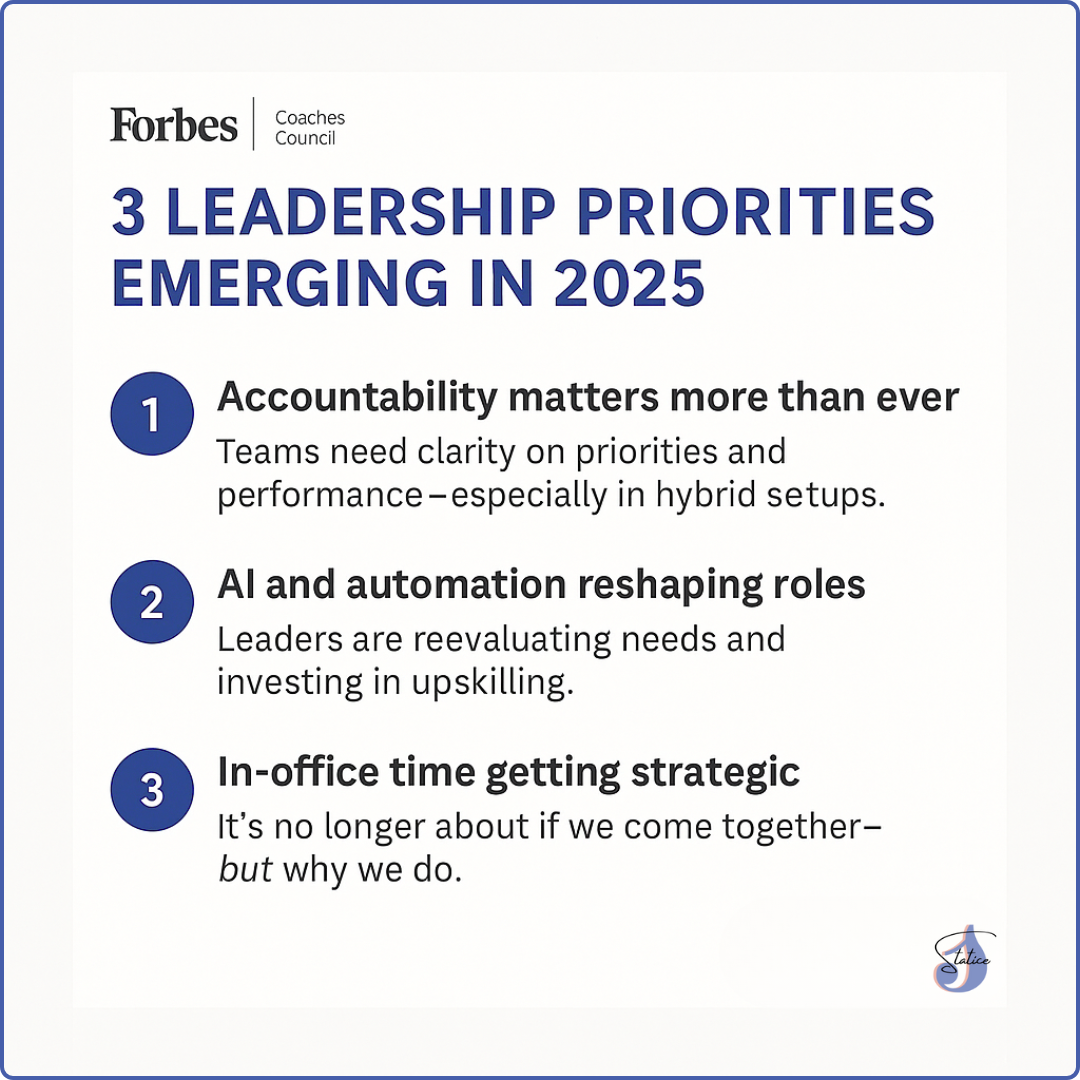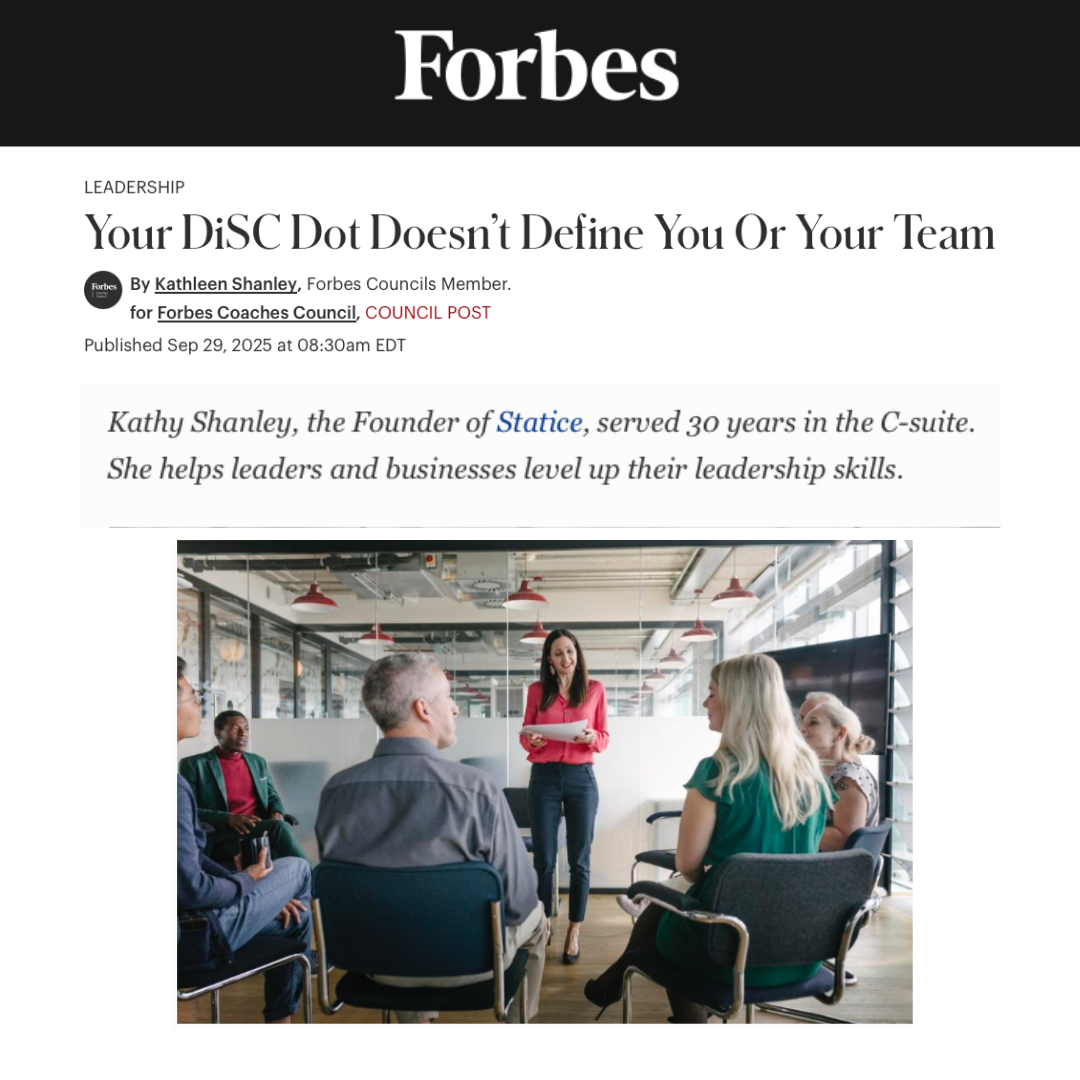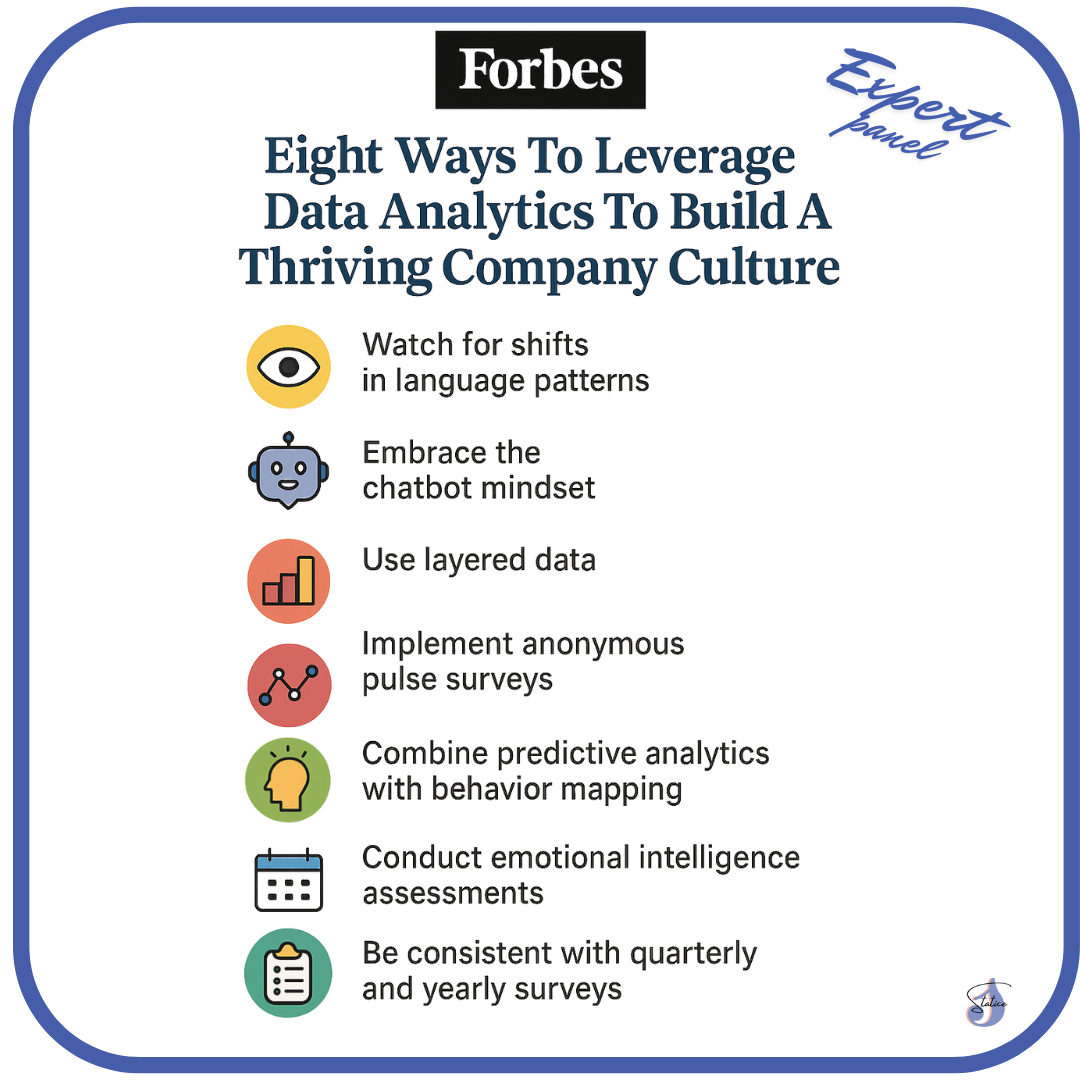How To Flip The Script For More Effective One-On-Ones
While most leaders treat one-on-one meetings as routine checkpoints, employees often come to them hoping for something more meaningful than a basic update. Flipping the script means shifting the conversation from what the leader needs to cover to what a team member wants to talk about—a simple adjustment that can dramatically change the quality of the discussion.
Coaches’ Lessons On How To Grow Through The Pain Of Transformation
True personal growth is rarely comfortable. For many professionals, transformation begins when familiar habits or long-held beliefs no longer align with the person they’re becoming. Those moments reveal the real work of coaching: helping clients sit with that uncertainty long enough to understand it, and then find the courage to move forward.
The Real Barriers To AI Adoption (And How To Fix Them)
About a year into the widespread move to integrate AI into organizations, many share a common concern: Implementation feels harder than expected. Yet adopting AI isn’t unlike introducing other large-scale changes, such as outsourcing payroll or adopting a new database system. The key is to look through three lenses: people, products and services, and processes.
How To Build A Self-Expressive, Psychologically Safe Workplace Culture
Inviting employees to bring their “whole selves” to work sounds inspiring—and it is. But it’s also complex. When people feel free to express who they are, teams gain depth, creativity and stronger connections. Yet with that authenticity comes a mix of sometimes conflicting perspectives, beliefs and emotions.
How Have Employer Priorities Shifted Post-Covid? 15 Expert Insights
During the pandemic and the period immediately after, many organizations made employees’ needs and preferences, from flexible schedules to enhanced well-being initiatives, their top priority. In the years since, workplace dynamics have continued to evolve as companies balance business goals with employee expectations.
20 Innovative Ways Coaching Professionals Are Leveraging AI
Smart coaching professionals are integrating AI into their practices and home lives to create more clarity, confidence and time to focus on what matters most to them. For coaches, use cases for AI include everything from learning about the latest trends and creating more engaging content to simplifying decision-making and drafting sharper proposals.
Your DiSC Dot Doesn’t Define You Or Your Team
Whether it is the Influence Style Indicator, which shares your influencing styles, CliftonStrengths, which measures your natural talents, or DiSC, which identifies your behavioral tendencies in the workplace, here is a message I repeat often: These tools are not the full story.
How Senior Leaders Can Break Habits That Limit Their Growth
Even the most accomplished executives can develop habits that quietly undermine their influence. Left unchecked, these patterns—from stifling new ideas to confusing activity with impact—erode trust, slow growth and limit innovation. The good news is that recognizing and correcting these missteps early helps leaders sharpen their effectiveness and foster environments where both people and businesses thrive.
How To Make Sure Empathy Helps (Not Hinders) Your Leadership
Empathy is often lauded as a cornerstone of effective leadership, as it helps leaders connect with their teams and build trust. For some leaders, though, an overly empathic approach can deplete their energy reserves and emotional capacity, blurring their decision-making, stalling accountability and even opening the door to burnout, all of which negatively impact trust. How can a leader lean into their empathy and EQ while still driving high performance?
How To Evolve Workplace Culture With Gen-Z
Generation-Z is bringing a fresh perspective to the workplace—one that challenges traditional norms while opening the door to new opportunities for growth. Younger employees must adapt to established professional standards, of course; however, leaders also have much to gain by paying attention to what Gen-Z models in real time.
20 Traits That Make A Professional Stand Out For Promotion
Being good at your job can lead to a promotion, but it’s far from the only factor leaders consider before making that call. You also have to demonstrate qualities that inspire confidence, trust and long-term leadership potential. Those who rise through the ranks tend to distinguish themselves in subtle, consistent ways that signal their readiness, reliability and potential to influence the organization.
20 Smart Tips For New Coaches To Attract The Right Clients
Starting a coaching practice is an exciting venture, but finding the right clients can be a challenge when you’re still establishing yourself in the market. The key lies in aligning your message, niche and outreach with the people you’re best equipped to help.
There are many ways to do this, from refining your personal brand to creating content that speaks directly to the needs of your target audience. Below, 20 members of Forbes Coaches Council explore how new coaches can best attract their ideal clients and build meaningful, lasting relationships.
How To Avoid Talking Yourself Into The Wrong Role
It all starts with a conversation.
Let's say you're considering a new career opportunity that sounds exactly like what you are hoping for. Before you say yes, take the time to get clarity on your role and responsibilities, understand the pathways for advancement, discuss the entire compensation package and confirm that your manager and HR are aligned on all of it.
20 Reasons Why New Hire Training Is So Challenging (And How To Fix It)
Effective training is essential for employee success, yet many organizations still struggle to provide new hires with the tools and support they need. From rushed onboarding to outdated mindsets, a variety of issues can hinder learning and long-term growth.
What 11 Years of Coaching Have Taught Me About Leadership
Eleven years ago, I launched Statice with the belief that the right question can change everything. Today, we’re celebrating more than a milestone. We’re celebrating momentum, impact, and the human potential behind leadership growth.
Four Ways To Clarify Boundaries Between CEOs And Board Chairs
One challenge many CEOs and board leaders face is navigating the often blurry line between staff leadership and board governance. Whether it’s a board president stepping in to make staffing decisions or an executive director weighing in on committee appointments, crossing these boundaries can cause friction, erode trust and ultimately impact the effectiveness of both roles. Both roles are vital to executing the mission and strategic goals of an organization.
How To Manage When Crisis Hits: 15 Practical Steps For Businesses
When a crisis hits a business, there’s no time for guesswork. The way leaders respond in those first hours and days sets the tone for their team, stakeholders and the future of the business. This is when leadership is tested and defined.
Unlocking Cohesion: The Four Pillars of Building Team Trust
Trust is the cornerstone of successful organizations. A leader's journey toward fostering trust involves embracing transparency, clarity, vulnerability, and feedback. Two case studies exemplify the transformative power of these elements using the Five Behaviors of a Cohesive Team model: trust, conflict, commitment, accountability, and results.
How To Build AI Literacy: 16 Ways To Stay Relevant As A Professional
You don’t need to become an expert overnight, but building AI literacy and sharpening your digital skills can help you lead more effectively, make smarter decisions and stand out in your field.
Eight Ways To Leverage Data Analytics To Build A Thriving Company Culture (That Lasts)
In a recent Forbes Coaches Council article, members of the Culture Architects Group shared eight ways to use technology and data analytics to proactively shape and sustain a resilient company culture. Below are our proven strategies.




















